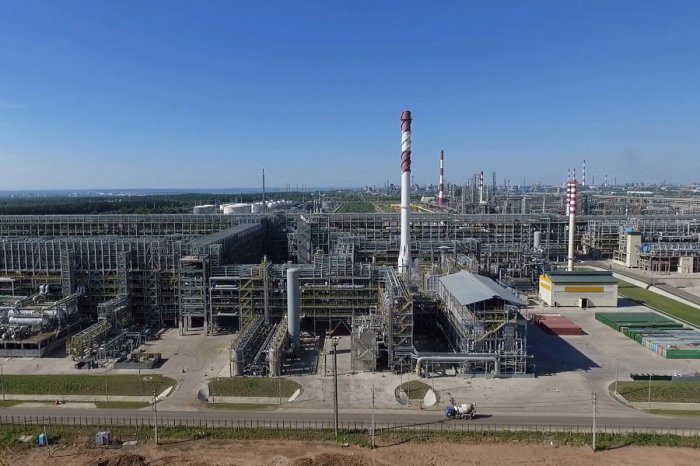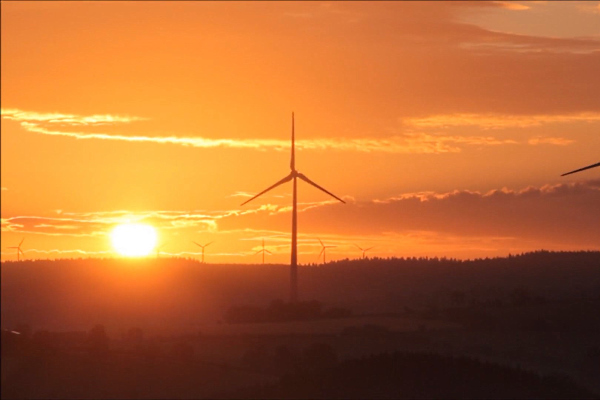After receiving the necessary documents (application form and project presentation), our team will try to review your request as soon as possible, and leading experts will offer the best options for project funding.
Only 10% of country's energy mix comes from photovoltaics, but experts expect solar investments in Germany to grow against the background of the abandonment of politically toxic hydrocarbons, part of which is currently imported from the Russian Federation.
This creates new opportunities for developing energy business in Germany that are worth watching closely in 2023-2024.
It is also important to remember the ambitious environmental goals that German government and business continue to achieve with large-scale investments in solar and wind energy.
In particular, the use of photovoltaics saved a total of 34.9 million tons of CO2 in Germany in 2020.
Germany's current goal is to achieve climate neutrality between 2040 and 2045, and the government is taking real steps in this direction. According to Fraunhofer ISE, the state invested 1.2 billion euros in energy research in 2020, with a significant portion of these funds spent on the study of renewable energy sources and photovoltaics in particular.
Companies that build new solar photovoltaic facilities across the country must adhere to strict environmental standards, including taking measures to preserve biodiversity and protect flora and fauna near construction sites. This approach, in particular, was demonstrated by the concern EnBW during planning and construction of the largest solar power plant in Germany near Werneuchen.
ESFC Investment Group, an international company with a strong presence in Europe, is ready to provide a full range of professional services in the field of financing PV projects.
We provide long-term loans for the construction of solar power plants in Germany and other European Union countries, offering clients financing up to 90% of the investment cost of the project.
Current situation in the German energy sector
Research shows that Germany, despite a relatively low level of solar radiation, has a huge potential for the development of solar energy and storage technologies based on photovoltaics.Investment in the construction of solar power plants in Germany has been relatively low in recent years, but the geopolitical situation of 2022, which has triggered a large-scale energy crisis and rising fossil fuel prices in Europe, is forcing decision-makers to think about accelerating the development of photovoltaics in the near future.
Moreover, Germany has great potential both for the construction of large stand-alone solar PV power plants and for the installation of small systems for individual consumption of thermal and electrical energy on the roofs of private houses, industrial facilities, shopping centers, and so on.
According to Fraunhofer IWES, there is a usable total area of 2845 km² suitable for solar systems (without open spaces).
This corresponds to an installable capacity of solar thermal systems of 2000 GW or an electrical capacity of photovoltaic systems of around 400 GW.
According to German energy experts, July 2022 was another record month for solar power generation. Photovoltaic installations provided 8.23 TWh of energy, which is about 20 percent of Germany's energy production this month. German experts refer to data from the Energy-Charts database maintained by the renowned Fraunhofer Institute. It shows that in July 2022 solar power plants in Germany produced more energy than in the previous month. This largely helped to maintain stable prices on electricity exchanges.
Sunny weather led to the photovoltaic sector providing 8.23 TWh of energy, accounting for more than 20% of national energy production in July 2022. More electricity in Germany during this period was produced only by thermal power plants operating on brown coal (almost 9 TWh).
Their share in the structure of domestic energy production was about 22%. Overall, the share of renewable energy sources in the German energy mix was 50.6% this month.

Table: Electricity production in Germany in July 2022 (Energy-Charts.info).
| # | Top-10 main sources of electricity | Production, GWh |
| 1 | Brown coal-fired thermal power plants | 8979,5 |
| 2 | Solar photovoltaic power plants of all types | 8212,8 |
| 3 | Onshore wind farms | 5352,7 |
| 4 | Thermal power plants on natural gas | 3990,8 |
| 5 | Thermal power stations on hard coal | 3907,2 |
| 6 | Thermal power plants on biomass | 3418,1 |
| 7 | Nuclear power plants | 2926,7 |
| 8 | Offshore wind farms | 1775,9 |
| 9 | Hydroelectric power stations | 1413,0 |
| 10 | Waste-to-energy thermal power stations | 697,4 |
As reported by PV Magazine, this is the third month in a row with records in German photovoltaics.
In May 2022, solar installations provided 7.7 TWh of energy, in June 2022 – 8 TWh of energy. At the same time, the average price for energy in Germany reached 315 euros / MWh, which is 8 times higher than in 2021.
Germany is close to the middle of the European level, where the most expensive energy is generated in Italy, the cheapest – in Sweden.
The largest solar power plant in Germany
The largest solar park in Germany has been operating since 2020 north of Werneuchen (Brandenburg).As part of one of the most famous energy investment projects in Germany, solar photovoltaic modules with a total installed capacity of 187 MW were built on a land plot of 164 hectares.
It's a small facility compared to megaprojects in India, China or Morocco, but it's bigger than Germany's largest onshore wind farm (83 turbines with an installed capacity of 171 MW).
The power plant consists of 465,000 photovoltaic modules with a capacity of 390 W each. This system provides an average production of about 180 million kWh of renewable electricity every year. In theory, the Weesow-Willmersdorf Solar PV Park is capable of providing 50,000 households with green energy. Previously, the construction site belonged to agricultural land. The current use of this site as a solar power plant avoids emissions of 129,000 tons of CO2 per year.
There is also space for nature and species conservation on the site. There are no PV modules on an area of 45 hectares. it should serve as a habitat for native plant and animal species. For this purpose, fruit trees, shrub and green hedges were planted and small biotopes were created.
Animals such as foxes and rabbits can enter the plot through gaps in the fence system.
In 2009, the project developer Procon Solar from Cottbus started developing the solar park. In 2018, the development plan was updated so that the module output was increased and the service life was extended to 40 years. EnBW, German energy company, took over the project rights in mid-2018. EnBW has invested around 100 million euros in this solar park over the next years.
The park is also the first major project in Germany to be implemented without feed-in tariffs under the Renewable Energy Sources Act (EEG).With the exception of hydropower, this has never been achieved on this scale with any other renewable technology.
The fact that the costs for photovoltaics have fallen by more than 80% over the past ten years is what triggered this success.
Grid connection is also important. This is critical aspect that can also cause solar PV projects to fail. If the area is perfect but the grid connection point is too far away, a solar project like this cannot be implemented economically. Two new electrical substations were built to connect Weesow-Willmersdorf Solar PV Park to the 110 kV power grid of the operator.
In addition to the project development, operation, monitoring and marketing of the energy were also taken into account from the very beginning of the project.
How can a solar plant be implemented on an area like this?
When it came to the question of which direction the PV panels should be installed, a wide variety of options were examined. When selecting suppliers for the 187-megawatt modules, a search was made together with famous institutes for the most economical technology which have proven their ability to function for over 40 years (project life until the end of 2060).
Below we have provided an up-to-date rating of the largest solar photovoltaic power plants in Germany with a brief description, installed capacity and the year of commissioning.

Table: List of the largest solar power plants in Germany as of 2022.
| Facility | Brief description | Installed capacity, MW | Year of commissioning |
| Solarpark Weesow-Willmersdorf | The largest solar project built in the federal state of Brandenburg with the participation of the energy company EnBW Energie Baden-Württemberg. | 187 | 2020 |
| Solarpark Alttrebbin | The solar park is located in eastern Brandenburg on an area of around 149 hectares. The solar power plant has an installed capacity of 150 MW under standardized conditions. 345,000 crystalline solar PV modules of 390 W each were used. This PV project by EnBW is based on the same engineering solutions as the Gottesgabe solar park. | 150 | 2022 |
| Solarpark Gottespark | The solar power plant is located about 60 km east of Berlin. It covers an area of 133 hectares, of which 122 hectares are built built with PV panels. Like the nearby solar power project in Alttrebbin, which was being implemented by EnBW at the same time, the Gottesgabe solar park is being built without the support of the Renewable Energy Sources Act. | 150 | 2022 |
| Solarkomplex Senftenberg | A large solar power plant near Senftenberg and Shipkau in Brandenburg, which was commissioned on September 24, 2011. The solar complex, consisting of the Schipkau Solar Park (72 MW) and the Senftenberg I (18 MW), II and III (78 MW) solar parks, was built on the tailings of the former Tagebau Meuro open pit coal mine. The solar park consists of 636 thousand solar PV modules. At the time of commissioning, it was the largest solar complex in Germany. | 148 | 2011 |
| Solarpark Neuhardenberg | The solar park consists of several separate facilities with a total installed capacity of 145 MW. The annual expected energy production is about 140 GWh, which corresponds to the average electricity consumption of 48,000 German households. The investors of the project were ENERPARC, ecos-energy, MEP Asset Management and BaySolar under the project management of ENFO AG. | 145 | 2012 |
| Solarpark Templin Groß Dölln | The solar park is located near Templin on the former military airfield Templin/Groß Dölln. The plant was built in 2012 and has an installed capacity of 128 MW with a specific power of about 6.2 W/m². 1.5 million thin-film modules from the manufacturer First Solar and 114 inverters from the German world market leader SMA were installed on an area of 214 hectares. The construction costs amounted to 204 million euros. The park was built by the Bavarian company Belectric. | 128 | 2013 |
| Solarpark Schornhof | The Schornhof solar power plant is located in the Upper Bavarian municipality of Berg im Gau in the district of Neuburg-Schrobenhausen. The solar park has an area of 144 hectares. The first 30 MW went into operation in October 2020. The facility was built by Anumar, and the investment costs have reached 60 million euros. The energy generated corresponds to the average consumption of 30,000 local households. An expansion to 190 MW was planned for 2022. | 128 | 2020 |
As we can see from the examples of German solar energy, the government, municipalities, private investors and lenders are taking important steps towards the development of this sector.
Now is a difficult time to finance new photovoltaic projects in Germany and in Europe in general.
If you are interested in project finance and long-term bank loans for the construction of a solar power plant, contact ESFC Investment Group.
We will be happy to provide you with advice on financing solar PV projects in Germany, loan guarantees, refinancing, as well as professional financial modeling and engineering services.




























